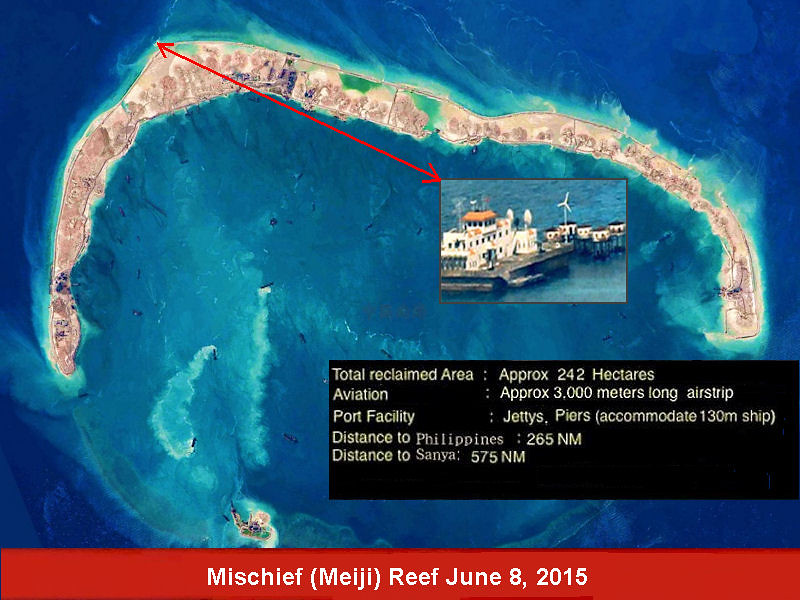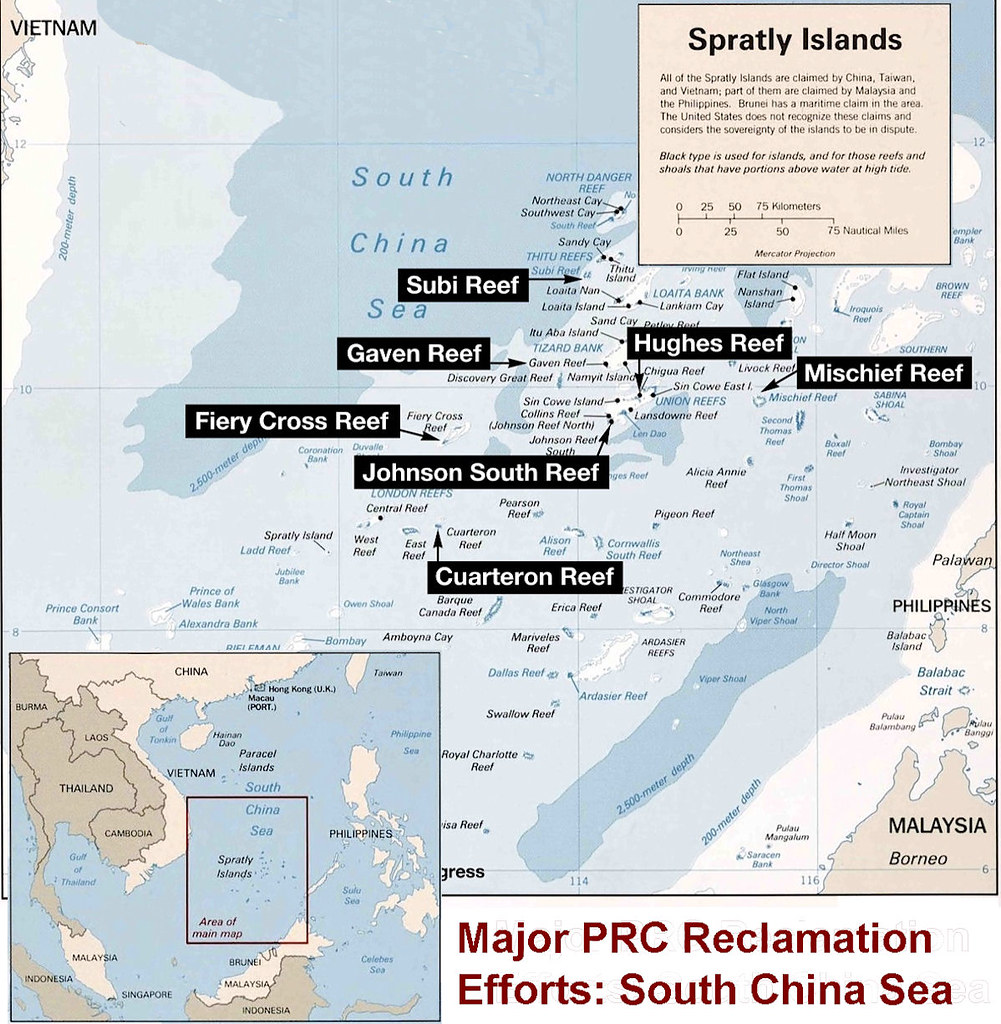Beijing could be preparing to build a second 3,000-metre airstrip on an artificial island in the disputed South China Sea, a Washington-based think-tank said.
China is already building a 3,000-metre (9,842 feet) runway on Fiery Cross reef, the longest in the area, which could ultimately be used for combat operations, according to the Center for Strategic and International Studies (CSIS).
Airstrip building in the Spratly islands goes back nearly 40 years and four other claimants already have such facilities, according to CSIS' Asia Maritime Transparency Initiative.
But China has been accused of seeking to advance its sovereignty claims with its land reclamation programme and tensions have been rising in the South China Sea.
The website said China's airstrip on Fiery Cross Reef, around 1,000 kilometres from the island province of Hainan just off the Chinese mainland, is in the "advanced stages" of construction, which began last year.
Satellite photos of another reef, Subi, where nearly four million square metres (988 acres) of land have been reclaimed, indicate Beijing may be getting ready to build another strip of similar length there, it added.
Alleged on-going reclamation by China on Mischief Reef in the Spratly Islands in the South China Sea …
"A Chinese airbase at Fiery Cross Reef would allow for much-improved situational awareness," the website said, adding it could let China deploy maritime surveillance aircraft and fighter squadrons in the area.
"China may be more readily able to use the airbase for patrols or limited offensive operations against other South China Sea claimants, or even United States assets," it added.
Taiwan is currently upgrading its 1,195 metre airstrip on Itu Aba island, CSIS said.
According to the website, Malaysia has the second-longest runway in the area on Swallow Reef at 1,368 metres. The Philippines' strip is slightly shorter but with an "extremely worn" dirt surface.
Vietnam, the first runway builder in the region in 1976, has the smallest at just 550 metres.
Malaysia, the Philippines and Vietnam are all members of the Association of South East Asian Nations, as is Brunei, another claimant to the waters.
Apprehension has grown over the militarisation of the South China Sea, nearly all of which is claimed by Beijing.
China is pouring massive amounts of sand to expand and fortify small reefs and build facilities which it says are meant to promote maritime and navigational safety and scientific research, as well as military purposes.
Washington has a network of military bases in Asia and conducts active reconnaissance of the area, and has been particularly critical of Beijing's activities, though it has also called on other claimants to cease new construction.
"The US side disregards and distorts the facts, and plays up 'China's military threat' to sow discord between China and China’s maritime neighbours in the South China Sea," Chinese defence ministry spokesman Yang Yujun said at a monthly briefing on Thursday.
"We firmly oppose such actions."
China's island-building and construction activities are expected to come under scrutiny during high-level Asian security meetings hosted by ASEAN from Tuesday, which top US and Chinese diplomats will also attend.
China's navy last week carried out a "live firing drill" in the South China Sea, involving at least 100 naval vessels, dozens of aircraft, missile launch battalions and information warfare troops, state media reported.




